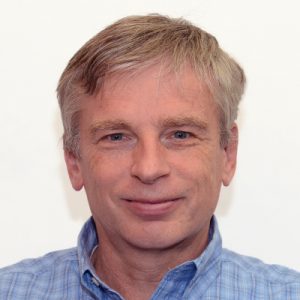We profile two of the research projects recently funded in Mathematical Sciences: Warren Adams’ work in operations research that was funded by the Office of Naval Research, and Mishko Mitkovski’s analysis research that was funded by the National Science Foundation.
Warren Adams
New RLT Theory for Solving Continuous Nonlinear and Mixed-Discrete Optimization Problems

The US Navy is interested in developing novel solution methods for solving large-scale optimization problems. These problems commonly arise in such scenarios as engineering design, facility layout and location, logistics, mission planning, production planning and control, resource allocation, and transportation science. Unfortunately, while they are of marked importance, these problems are well-recognized as being extremely difficult to solve. Generally speaking, state-of-the-art solution procedures lag far behind Navy needs, so that research advances can have significant positive impact. The goal of this project is to develop new theory and tools for more efficiently solving such problems, with the intent of solving larger and more complex instances than currently possible.
A fundamental challenge to solving these optimization problems is the development of mathematical representations that are amenable to solution strategies. While more than one mathematical form can accurately depict a given scenario, the ability to obtain optimal solutions often critically hinges on the formulation used. Two challenges arise. These challenges are: to devise representations that lend themselves to superior solution strategies, and to develop the underlying theory that fully exploits the mathematical structure of the representations. Both challenges are addressed in this research.
A promising direction for obtaining improved representations is to recast motivating problems into different variable spaces. Such problem “redefinitions” use auxiliary variables to partially avoid mathematical complexities, and thus yield simpler forms in higher-dimensional spaces. Over the course of the past 25 years, Drs. Adams and Sherali (former PhD advisor of Dr. Adams) have developed a comprehensive and unifying theory, known as the reformulation-linearization-techinque (RLT), for effectively reformulating difficult combinatorial and nonconvex optimization problems. The RLT theory, which is now well-known in the optimization literature, has led to marked improvements for a wide array of problems. However, the general RLT process is very broad in nature, and there exists considerable potential for further extending the theory and for applying it to additional problem classes.
The main research thrust of this effort is to develop a comprehensive new theory that extends the RLT constructs for mixed-discrete polynomial programs to encompass continuous, nonconvex programs, and to use this newfound theory as the foundation for global optimization methods. A secondary thrust is to invoke existing RLT constructs to unify and extend recent theoretical contributions for classical combinatorial optimization problems.
Mishko Mitkovski
De Branges Spaces as a Model for a General Theory of Function Spaces

A wide variety of problems in mathematics and science in general, after some preliminary mathematical considerations can be expressed as problems concerning operator semigroups. One of the classical approaches for solving these types of problems is to look at the spectral picture of these semigroups. The corresponding spectral picture usually involves a chain of spaces of analytic functions, and understanding the structure of these spaces is crucial for resolving the initial problem. The class of de Branges spaces is one of the most important classes that appears in the spectral picture of a very general class of operator semigroups. Introduced in the sixties, the theory of de Branges spaces encompasses a great deal of mathematical analysis knowledge at that time. In particular, this theory generalizes the theory of orthogonal polynomials, moment problems, the theory of Sturm-Liouville systems, Schrodinger operators, Dirac systems, Krein strings, etc. As such, it continues to play an important role in modern mathematics providing a setting for interplay between various areas of mathematics, including Fourier analysis, spectral theory, operator theory, random matrix theory, analytic number theory, and mathematical physics.
The main research objective of this project is to conduct a deeper analysis of de Branges function spaces, and use the resulting findings to attack and resolve several long-standing open problems. Many of these problems are much more general in nature and go far beyond the setting of de Branges spaces. The reason that we chose de Branges spaces as a model is due to the fact that this class of spaces already contains most of the key difficulties. A second goal of this project is to develop a theory that will unify the theory of classical function spaces, and use this unification as a guideline to new methods for resolving the remaining open questions about these spaces. Until now, most of the function spaces were studied one at a time and consequently there are many results which are known to hold for some of them, but are considered to be not known for other spaces. With so many results appearing almost daily it becomes really difficult even for the experts to keep track of what is known and what is unknown for each space separately. This project provides a solution to this problem by offering a framework to systematize all these results, and make it clear which of the properties are known and which ones deserve a further exploration. Furthermore, it also allows one to identify and adapt techniques that were successful in certain spaces, and use them to attack similar problems in other spaces. Finally, this project provides a language that is easily accessible both to people working in function and operator theory, as well to people working in mathematical physics and harmonic analysis. This way, it provides a bridge to translate and apply ideas from different areas of mathematics.
